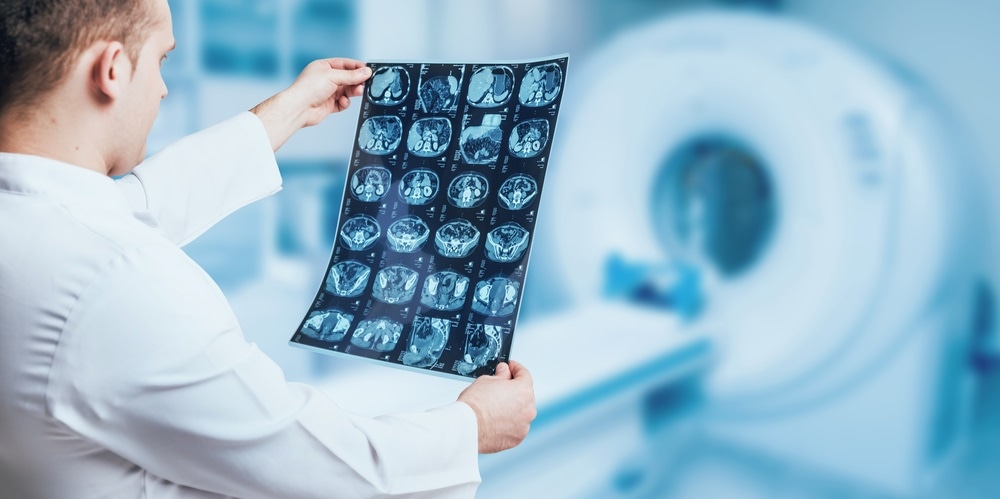Biomedical imaging of obese adolescents' brains has revealed signs of damage that may be related to inflammation in the nervous system, according to new research.
 Image Credit: Roman Zaiets / Shutterstock.com
Image Credit: Roman Zaiets / Shutterstock.com
The finding comes from a study due to be presented next week at the annual meeting of the Radiological Society of North America.
Obesity among children and adolescents is a serious problem
The proportion of children and adolescents affected by obesity in the United States represents a major public health concern.
According to the Centers for Disease Control and Prevention (CDC), the percentage of children and adolescents who are obese has increased more than three-fold since the 1970s.
A CDC National Center for Health Statistics report estimated that obesity prevalence among young people in the US was 18.5% between 2015 and 2016.
The prevalence of obesity among adolescents (aged 12 to 19 years) and school children (aged 6 to 11 years) was higher than it was among pre-school children (aged 2 to 5 years), at 20.6%, 18.4%, and 13.9%, respectively.
According to the data from the World Health Organization, the number of obese or overweight infants and children (aged five years or younger) worldwide increased from 32 million in 1990 to 41 million in 2016.
Using MRI to assess the health of white matter in the brain
Research has recently suggested that obesity causes inflammation in the nervous system (neuroinflammation) that could cause damage to important areas of the brain.
Advances in magnetic resonance imaging (MRI) such as diffusion tensor imaging (DTI) have enabled researchers to study this damage directly. DTI is an imaging technique that scientists can use to track water as it diffuses along signal-conducting white matter tracts in the brain.
For the current study, biomedical scientist Pamela Bertolazzi from the University of São Paulo in Brazil and colleagues used DTI to study white matter in the brains of 59 adolescents (aged 12 to 16 years) with obesity and 61 normal-weight adolescents in the same age range.
The team derived a measure from DTI called fractional anisotropy (FA), which correlated with the health of white matter: a reduced (FA) is an indicator of increasing damage to the white matter.
Brain changes in obese adolescents related to important brain regions
On comparing the DTI results, Bertolazzi and the team found that obese adolescents had reduced FA values in areas of the corpus callosum, a group of nerve fibers that connect the left and right brain hemispheres. FA values were also reduced in the middle orbitofrontal gyrus, a part of the brain involved in emotional control and the reward circuit. None of the obese adolescents had increased FA values in any region of their brains.
Brain changes found in obese adolescents related to important regions responsible for control of appetite, emotions, and cognitive functions,"
Pamela Bertolazzi, University of São Paulo in Brazil
The brain changes also related to important hormones
This pattern of damage to the white matter was correlated with the inflammatory marker leptin, a hormone produced by fat cells that is involved in the regulation of fat stores and energy levels.
Sometimes, in cases of obesity, the brain does not respond in the usual way to leptin, which causes the individual to carry on eating even though they have enough or more than enough fat stored. This condition, which is referred to as leptin resistance, causes fat cells to make yet more leptin.
The white matter pattern of damage also correlated with levels of insulin, the hormone made by the pancreas that helps to control blood glucose levels. Obese individuals often have insulin resistance, a state where the body no longer responds to the effects of the hormone.
"Our maps showed a positive correlation between brain changes and hormones such as leptin and insulin," says Bertolazzi. "Furthermore, we found a positive association with inflammatory markers, which leads us to believe in a process of neuroinflammation besides insulin and leptin resistance."
Bertolazzi says further studies are needed to establish whether this inflammation in young obese people results from structural changes in the brain.
"In the future, we would like to repeat brain MRI in these adolescents after multi-professional treatment for weight loss to assess if the brain changes are reversible or not," she adds.